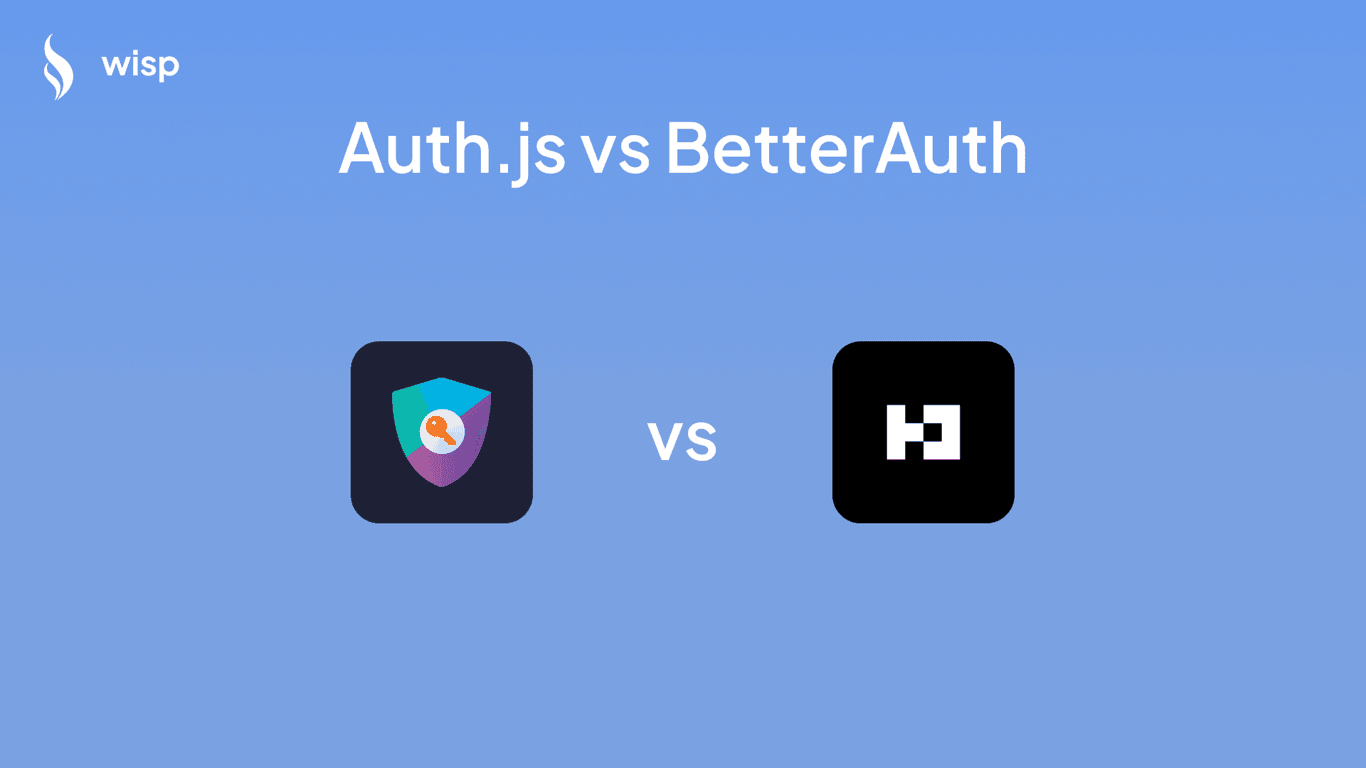
You've built your authentication system on Lucia, carefully crafting user sessions and implementing security measures. Then suddenly, you see the announcement - Lucia is being deprecated by March 2025. Your heart sinks as you realize you'll need to migrate your entire auth system to something else.
If this scenario resonates with you, you're not alone. Across developer forums and communities, teams are grappling with this unexpected transition. The announcement has left many questioning their authentication strategies and searching for reliable alternatives.
Why is Lucia Being Deprecated?
The decision to deprecate Lucia comes from a fundamental realization by its maintainers - the library wasn't effectively serving its intended purpose in practical applications. While Lucia provided a solid foundation for understanding authentication concepts, it faced several challenges:
Database Adapter Complexity: Maintaining various database adapters proved increasingly difficult, limiting the library's flexibility in real-world scenarios. The required database schema, while clean, often needed complex modifications for specific use cases:
CREATE TABLE user (
id TEXT NOT NULL PRIMARY KEY
);
CREATE TABLE user_key (
id TEXT NOT NULL PRIMARY KEY,
user_id TEXT NOT NULL REFERENCES user(id),
hashed_password TEXT
);
CREATE TABLE user_session (
id TEXT NOT NULL PRIMARY KEY,
user_id TEXT NOT NULL REFERENCES user(id),
active_expires INTEGER NOT NULL,
idle_expires INTEGER NOT NULL
);
Abstraction Level Challenges: While developers appreciated Lucia's abstraction level, as noted in community discussions, it sometimes led to confusion about whether it was a complete solution or a utility API.
Documentation Struggles: Users frequently expressed frustration with Lucia's documentation, describing it as "such a mess". This made implementation and troubleshooting more challenging than necessary.
The Silver Lining: A New Direction
Instead of maintaining the library, Lucia is pivoting to become an educational resource. This shift will focus on teaching developers crucial authentication concepts including:
Two-Factor Authentication (2FA) implementation
Password reset workflows
Email verification methods
Rate limiting strategies
Modern passkey technology
This transition aligns with the growing trend in the developer community of wanting to understand authentication deeply rather than just implementing black-box solutions. As one developer noted in the community discussions, there's value in "rolling your own" solution when you truly understand the underlying concepts.
Exploring Alternative Authentication Solutions
As teams begin planning their migration away from Lucia, several robust alternatives have emerged as potential replacements. Let's examine the top contenders:
1. NextAuth.js (Now AuthJS)
Pros:
Open-source with strong community support
Extensive provider support (OAuth, email, credentials)
Seamless integration with Next.js applications
Built-in security features
Cons:
Primarily focused on Next.js ecosystem
Less flexible for custom authentication flows
2. Clerk
Pros:
Pre-built UI components
Comprehensive user management
Multi-factor authentication support
Enterprise-grade security
Cons:
Pricing can be expensive for larger applications
Less control over authentication flow
3. Supabase Auth
Pros:
Open-source
Built-in user management
Multiple authentication methods
Database integration
Cons:
Tied to Supabase ecosystem
4. Auth0
Pros:
Enterprise-ready solution
Extensive documentation
Robust security features
Multiple integration options
Cons:
Can be costly for small to medium projects
Complex setup process
5. Custom Solution
Many teams are considering building their own authentication systems, especially with Lucia's upcoming educational resources. This approach offers:
Complete control over the authentication flow
No vendor lock-in
Tailored to specific needs
Better understanding of security implications
However, as noted in developer forums, building a custom solution requires significant expertise and ongoing maintenance commitment.
The Future of Authentication
The deprecation of Lucia reflects broader shifts in the authentication landscape. Let's explore the key trends shaping the future of auth:
1. The Rise of Passwordless Authentication
"Totally exhausted by passwords and cost and efforts associated with it" - this sentiment echoes across the developer community. The future of authentication is increasingly passwordless, with solutions like:
Passkeys: Built on WebAuthn standards, offering secure authentication without passwords
Magic Links: One-time email links for seamless login experiences
Biometric Authentication: Leveraging device-level security features
2. Enhanced Multi-Factor Authentication (MFA)
Security experts are pushing for stronger authentication methods:
Something you know (password/PIN)
Something you have (phone/security key)
Something you are (biometrics)
This "three-factor authentication" approach is becoming increasingly standard, especially in enterprise environments.
3. Integration with Identity Providers
Modern authentication solutions need to work seamlessly with existing identity providers. Common requirements include:
SSO Integration: Supporting major providers like Google, Microsoft, and Okta
B2B Authentication: Handling enterprise identity management
Custom Identity Providers: Flexibility to work with proprietary systems
4. Focus on Developer Experience
The community's frustration with complex authentication solutions has led to increased emphasis on:
Clear, comprehensive documentation
Simplified implementation processes
Flexible abstraction levels
Strong community support
5. Regional Compliance
Authentication solutions must adapt to various regulatory requirements:
GDPR compliance for European users
CCPA for California residents
Industry-specific regulations (HIPAA, SOC2, etc.)
Best Practices for Migration
As you plan your migration away from Lucia, consider these best practices:
1. Audit Your Current Implementation
Document your existing authentication flows
Identify custom implementations and specific requirements
List all integration points with other systems
Analyze your security requirements
2. Choose the Right Alternative
Consider these factors when selecting a new authentication solution:
Scale: Will it handle your user base growth?
Cost: Calculate total cost of ownership, including maintenance
Integration: How well does it work with your tech stack?
Security: Does it meet your security requirements?
Compliance: Does it satisfy regulatory requirements?
3. Plan the Migration
Create a detailed migration timeline
Test thoroughly in a staging environment
Plan for data migration
Prepare rollback procedures
Consider gradual migration for large systems
4. Future-Proof Your Implementation
Use standard protocols (OAuth2, OpenID Connect)
Implement proper abstraction layers
Document thoroughly
Plan for scalability
Conclusion
While Lucia's deprecation may feel like a setback, it's an opportunity to upgrade your authentication system with modern solutions. Whether you choose a managed service like Auth0, an open-source solution like NextAuth, or decide to build your own system, the key is to focus on security, user experience, and maintainability.
The future of authentication is moving towards passwordless solutions, enhanced security through MFA, and better developer experiences. As you migrate from Lucia, consider these trends and choose a solution that not only meets your current needs but positions you well for the future of authentication.
Remember, Lucia's transition to an educational resource means you'll have access to valuable learning materials about authentication concepts. This knowledge will be invaluable whether you're implementing a third-party solution or building your own authentication system.
The authentication landscape continues to evolve, and staying informed about best practices and emerging technologies will help ensure your users' security and satisfaction.



